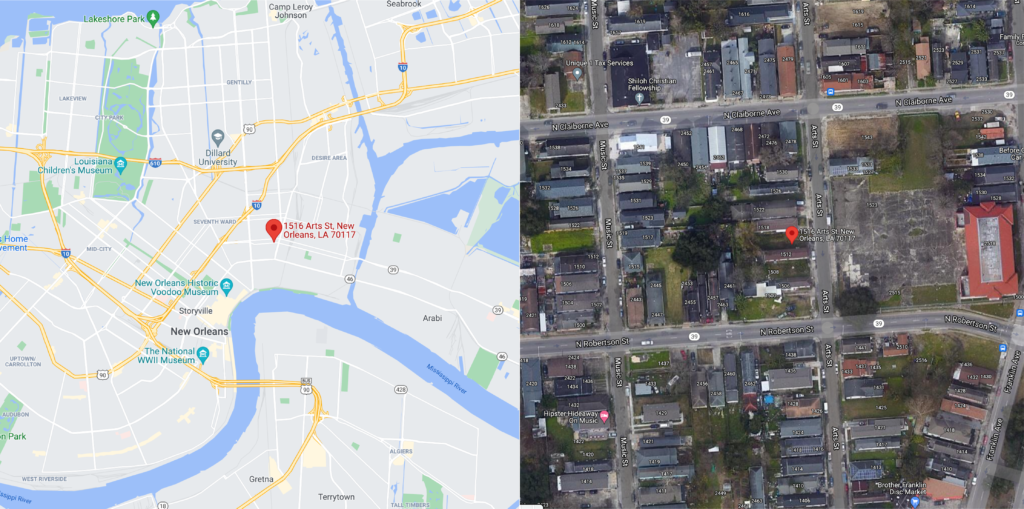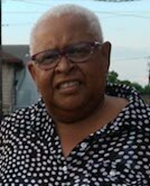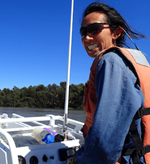Apply now to join our next cohort of Community Science Fellows and Community Leads!

A proposed project area for a new neighborhood green space. Photo courtesy of Google Maps. Diagram courtesy of students of Dr. John Pardue at Louisiana State University.
Most of the working poor African American communities were flooded in New Orleans, Louisiana and severely impacted by Hurricane Katrina in 2005. The same areas continue to face issues of low air quality, high flood risk, massive loss of affordable housing units and neglected infrastructure. A Community Voice aims to design and create a bioswale that will provide a green space, to help improve air quality and absorb urban flooding. Community members can enjoy nature in their own backyard and know that the plants and soil are contributing to a safer neighborhood. Plants used in the bioswale will provide a variety of benefits from pollution reduction, shading and cooling, and medicinal effects.
This project builds on a previous Thriving Earth Exchange project with A Community Voice and Louisiana State University
The goal of the project is to design and install an urban green space for community members to spend time outdoors and improve air quality and mitigate flood risk . The activities of the project will include researching the best vegetation and soil types for developing a bioswale with benefits including air quality improvement, food or medicinal properties, and flood water absorption. A Community Voice plans to engage the local residents to ensure the space fits the needs of the community and results in a sustainable, welcoming paradise for the community. They are also planning to recruit local residents as volunteers to maintain the bioswale.
The project will be completed on an empty 100ft x 25 ft lot at 1516 Arts St. New Orleans, Louisiana. Permit acquisition is currently underway. We hope this project can be a model for similar projects throughout the urban south and a proof of concept for developing sustainable green spaces with multiple benefits.

Maps of the project area in New Orleans. Images courtesy of Google Maps.
A Community Voice would like to design and install the 2500 ft2 bioswale by August 2022.

Beth Butler, Executive Director of A Community Voice

Debra Campbell, elected chairperson of A Community Voice

Alex Christensen (she/her) is a coastal scientist studying wetland ecology and hydrology.
We are looking for 2-3 scientists to assist with this project that will complement the goals of this project. We are looking for people passionate about urban green spaces and motivated to use natural landscapes in social justice efforts. There are no specific education requirements and the scientist doesn’t need to live in New Orleans.
Plant Ecologist
Landscape Architect
Air Quality Specialist (Lower priority)
Thriving Earth Exchange asks all scientific partners to work with the community to help define a project with concrete local impact to which they can contribute as pro-bono volunteers and collaborators. This work can also position the scientists and communities to seek additional funding, together, for the next stage.
Interested in volunteering as a scientist? Apply now!
A Community Voice has been collaborating with Dr. John Pardue and students from the Department of Civil and Environmental Engineering at Louisiana State University. More information about this collaboration can be found here.
(c) 2024 Thriving Earth Exchange